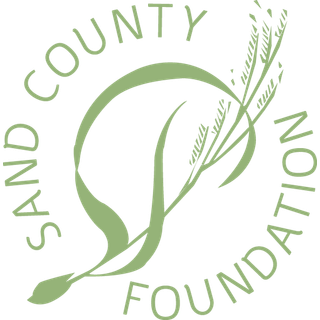Barby Ranch’s remote location poses some challenges, including no permanent access roads and no utilities.
But that doesn’t deter Bill Barby. His passion for conservation and collaboration knows no bounds.
Through rotational grazing, prescribed burns, and removal of invasive trees, Bill has restored the ranch’s native habitats and ecological functions. Thousands of acres of healthier grassland and riparian areas provide habitat for imperiled species like the Lesser Prairie-Chicken, whooping crane, and Arkansas River shiner. Conservation partnerships have achieved improved water quality, biodiversity, and carbon sequestration on the landscape.
Bill says rotational grazing is the cornerstone of Barby Ranch’s revival. Decades ago, he and wife Debbie divided the ranch into two pastures, high ground in the sand hills, and lower ground along the Cimarron River that flows through the ranch. They later tapped into conservation program resources to finance cross fencing and water developments. Two pastures became nine before the ranch was further divided into 26 paddocks.
For grazing efficiency, the Barby’s cow-calf herd is moved through the paddocks as one group. Their movements are scheduled by a plan that provides grass rest and full recovery between grazings. This system has allowed the Barbys to profitably increase their stocking rate by 40 percent. Neighbors took notice of this successful strategy and adopted the same approach.
Rotational grazing encourages growth of deep-rooted grasses that can rebound quickly after drought or wildfire. This was put to the test when the entire ranch burned in 2017’s Starbuck wildfire, the largest in Kansas’ history.
View their conservation success story
Given the ranch’s remote, off-the-grid location in Clark and Comanche counties, solar energy powers water wells while gravity-flow pipelines supply watering tanks. Cameras monitor movement at the perimeter gates and water tank levels, and photos sent to cell phones cut costs by saving many miles of driving.
Bill undertook a mix of mechanical removal and prescribed burns to stop the encroachment of Tamarisk and Eastern Red Cedar trees along the ranch’s productive and valuable river bottom corridor. Widespread tree cover was replaced with more than 200 varieties of native grasses, plants, and forbs. Strong populations of native fish and birds at Barby Ranch are indicators of clean water and healthy grasslands.
Bill also used prescribed fire to manage Sand Sagebrush on pastureland instead of broadcasting chemicals that would have killed nontargeted broadleaf vegetation. These beneficial plants can comprise more than 30 percent of cattle’s diet while benefitting pollinators and grassland birds.
Though not common practice in Kansas, Bill’s use of prescribed fire as a conservation tool has demonstrated a natural alternative to control tree infestation and prevent wildfires. A variety of landowners and conservation professionals have visited Barby Ranch to see its transformation and the innovative practices being used.
Bill’s conservation ethic has led him to serve in local and regional leadership roles, including the Cherokee Strip Prescribed Burn Association and the Lesser Prairie Landowner Alliance.
“The most successful and difficult thing I have done is to develop and implement a succession plan with a non-family heir,” Bill said of leasing his ranch.
Now in its third year, the tenant owns a percentage of the cattle and conducts day-to-day operation, while Bill oversees the land’s management.
At a time when the Great Plains’ grasslands are among the most threatened ecosystems in North America, and bird and pollinator populations are in decline, who better to mentor the next generation than Bill Barby.







